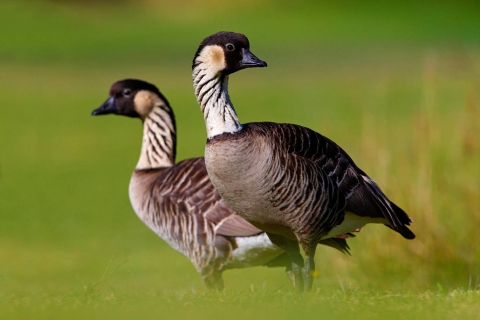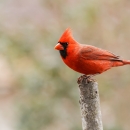Featured Species
Hulē‘ia National Wildlife Refuge (NWR) is approximately 241 acres and was established in 1973 under the Endangered Species Act to recover threatened and endangered species including the koloa maoli (Hawaiian duck, Anas wyvilliana), ‘alae ke‘oke‘o (Hawaiian coot, Fulica alai), ‘alae ‘ula (Hawaiian gallinule, Gallinula chloropus sandvicensis), ae‘o (Hawaiian stilt, Himantopus mexicanus). Also included is the nēnē (Hawaiian goose, Branta sandvicensis) which has recently been listed as Threatened. Managed wetlands within the Hulē‘ia River Valley provide for the birds’ lifecycle history requirements. In addition, 26 other bird species (18 of which are introduced) also use the Refuge.








